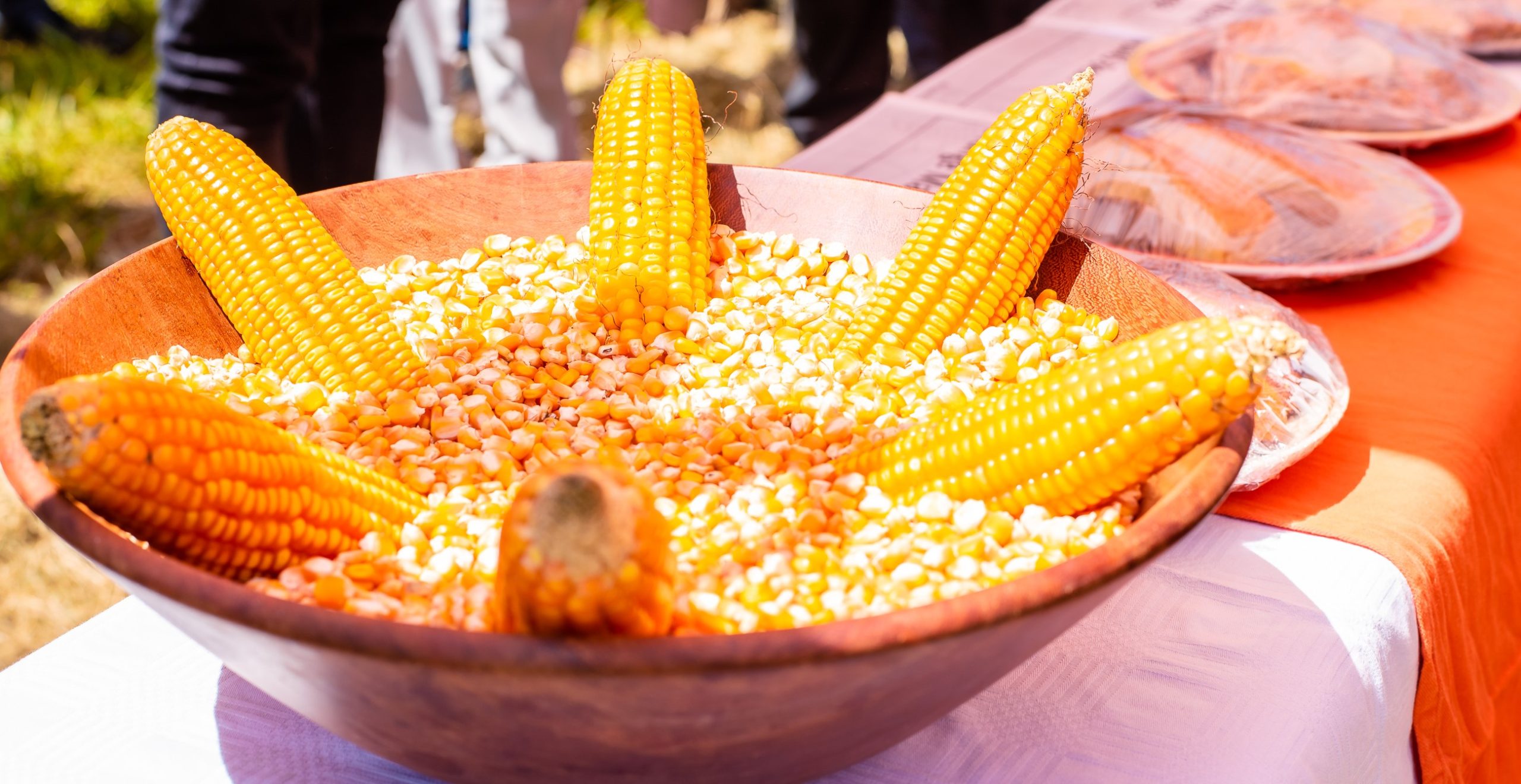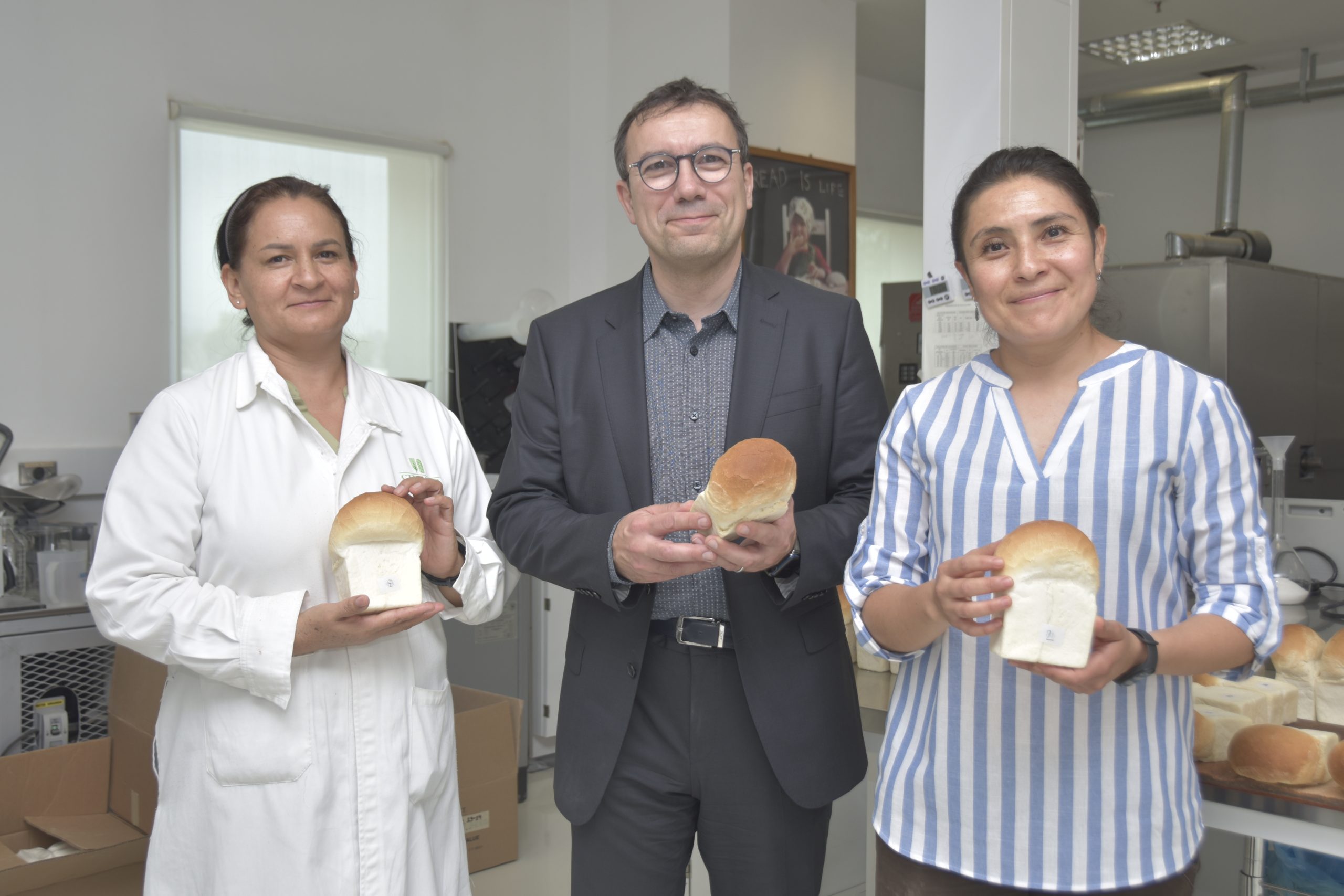Nutrition, health and food security
As staple foods, maize and wheat provide vital nutrients and health benefits, making up close to two-thirds of the world’s food energy intake, and contributing 55 to 70 percent of the total calories in the diets of people living in developing countries, according to the U.N. Food and Agriculture Organization. CIMMYT scientists tackle food insecurity through improved nutrient-rich, high-yielding varieties and sustainable agronomic practices, ensuring that those who most depend on agriculture have enough to make a living and feed their families. The U.N. projects that the global population will increase to more than 9 billion people by 2050, which means that the successes and failures of wheat and maize farmers will continue to have a crucial impact on food security. Findings by the Intergovernmental Panel on Climate Change, which show heat waves could occur more often and mean global surface temperatures could rise by up to 5 degrees Celsius throughout the century, indicate that increasing yield alone will be insufficient to meet future demand for food.
Achieving widespread food and nutritional security for the world’s poorest people is more complex than simply boosting production. Biofortification of maize and wheat helps increase the vitamins and minerals in these key crops. CIMMYT helps families grow and eat provitamin A enriched maize, zinc-enhanced maize and wheat varieties, and quality protein maize. CIMMYT also works on improving food health and safety, by reducing mycotoxin levels in the global food chain. Mycotoxins are produced by fungi that colonize in food crops, and cause health problems or even death in humans or animals. Worldwide, CIMMYT helps train food processors to reduce fungal contamination in maize, and promotes affordable technologies and training to detect mycotoxins and reduce exposure.
New heat-tolerant wheat varieties prove fruitful for Ethiopia’s irrigated lowlands
 Climate adaptation and mitigation
Climate adaptation and mitigation
The release of new lines by the ADAPT-Wheat project will expand Ethiopia’s total farming area and wheat production by opening up lowland farming opportunities.
Cultivating healthier communities with provitamin A maize varieties
 Nutrition, health and food security
Nutrition, health and food security
A CIMMYT-led study highlights how provitamin A maize could make a real difference in vitamin A intake of smallholder farmers in rural areas of Zimbabwe.
Unlocking genetic innovations through collaborative pathways
 Climate adaptation and mitigation
Climate adaptation and mitigation
The International Maize Improvement Consortium for Africa field day in Harare enabled CIMMYT to showcase genetically diverse maize lines, have structured dialogues with diverse stakeholders, and review and refine breeding strategies and approaches.
Over 5,000 Busia farmers to benefit from Kalro certified millet seed
 Nutrition, health and food security
Nutrition, health and food security
Source: The Star ()
New CGIAR Deputy Executive Managing Director warmly welcomed at CIMMYT
 Innovations
Innovations
Last week, CIMMYT welcomed Guillaume Grosso, CGIAR’s new deputy executive managing director, to its headquarters in Texcoco, Mexico.
Malawi faces a food crisis: why plans to avert hunger aren’t realistic and what can be done
 Nutrition, health and food security
Nutrition, health and food security
Source: EconoTimes ()
CIMMYT experts, including Mazvita Chiduwa, stress that importing food is the only solution to prevent hunger in Malawi due to severe drought.
New innovative crops could significantly reduce agriculture’s climate change impact and environmental footprint
 Climate adaptation and mitigation
Climate adaptation and mitigation
The Novo Nordisk Foundation has awarded a grant of up to USD 21.1 million to CIMMYT for a groundbreaking initiative to mitigate the environmental impact of agriculture, by developing new wheat varieties that are capable of reducing agriculture’s nitrogen footprint. The CropSustaiN initiative could have sweeping implications for global food security and environmental sustainability.
With courage, they are an example of innovation in the field
 Capacity development
Capacity development
The active participation of rural women in agricultural development has been a fundamental element in promoting sustainable transformation in communities in southeast Mexico, Guatemala, and Honduras.
Mexico, a lab from which solutions are generated to address global challenges
 Capacity development
Capacity development
Leaders from the CGIAR Initiative: Excellence in Agronomy visit Mexico to learn how the hubs driven by CIMMYT and collaborators have positive impacts on farming communities.
Opinion: Aid competes with long-term solutions to Sudan’s hunger crisis
 Climate adaptation and mitigation
Climate adaptation and mitigation
Restoring food production within the country is just as important as emergency food aid — if not, Sudan risk racing from crisis to crisis.
How improved seeds empower women farmers in South Kordofan
 Capacity development
Capacity development
Working with partners, CIMMYT’s Sustainable Agrifood Systems Approach for Sudan empowers women farmers in conflict-torn South Kordofan. It provides them with training and resources to increase crop yields and enhance community self-sufficiency.
A sustainable agrifood systems approach in conflict-ridden Sudan
 Capacity development
Capacity development
CIMMYT, in partnership with USAID, is implementing the Sustainable Agrifood Systems Approach for Sudan, an integrated agrifood system model designed to underpin food security through scalable development opportunities and sustainable agricultural practices.
Roots of resilience: my journey as a Conservation Agriculture champion
 Climate adaptation and mitigation
Climate adaptation and mitigation
Conservation Agriculture promotes climate resilience, increased crop yields, and healthier plants, supporting livelihoods and food security across the region. Grace Malaicha tells her story.
Ghana hosts West African consultative meeting to transform dryland agriculture
 Nutrition, health and food security
Nutrition, health and food security
Source: Ghana News Agency ()
The conference focused on enhancing yields of key cereals like sorghum and millet through innovation.














